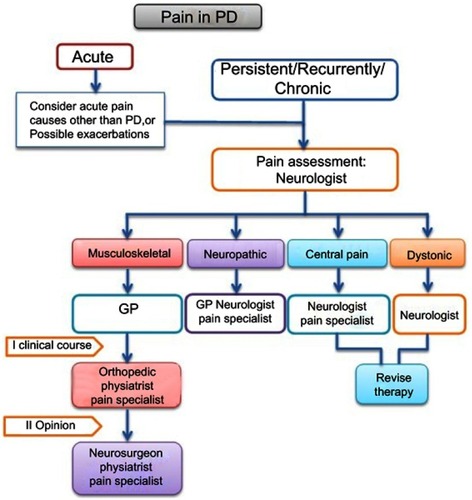Figures & data
Table 1 Study results pain I Parkinson’s disease
Figure 1 Pain management in Parkinson’s disease. The first pain assessment is generally performed by the GP or by a neurologist, and it allows to distinguish persistent/recurrent chronic pain from acute pain (eg, painful exacerbation of chronic diseases, or acute pain unrelated to PD). Acute pain is addressed according to the underlying pathology (eg, analgesic medications and surgery for cholelithiasis). In case of persistent/recurrent chronic pain, the pain evaluation is performed by a neurologist who identifies the precise pain category (ie, musculoskeletal, neuropathic, central, and dystonic pain). According to pain diagnosis, the patient care may involve different professionals (1st clinical course). Although re-evaluation of PD therapy is helpful against central, or dystonic pain, therapeutic approaches for musculoskeletal, or neuropathic pain may require the expertise of other specialists, such as pain therapists, orthopedics/physiatrists, rheumatologists, or neurosurgeons (2nd opinion).

Table 2 Selected analgesic opioid drugs
Table 3 Practical suggestions for managing pain in Parkinson’s disease
